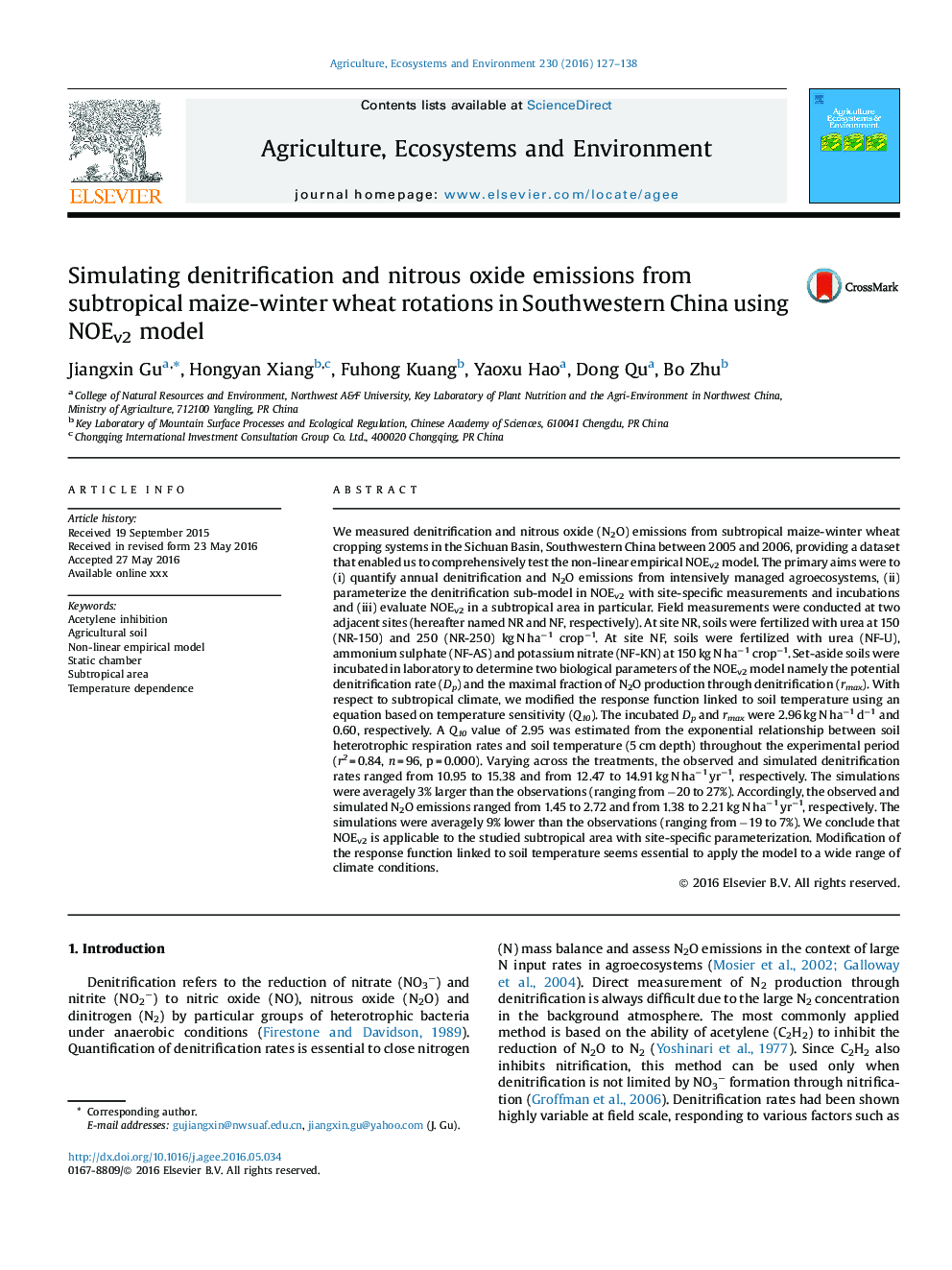| Article ID | Journal | Published Year | Pages | File Type |
|---|---|---|---|---|
| 8487383 | Agriculture, Ecosystems & Environment | 2016 | 12 Pages |
Abstract
We measured denitrification and nitrous oxide (N2O) emissions from subtropical maize-winter wheat cropping systems in the Sichuan Basin, Southwestern China between 2005 and 2006, providing a dataset that enabled us to comprehensively test the non-linear empirical NOEv2 model. The primary aims were to (i) quantify annual denitrification and N2O emissions from intensively managed agroecosystems, (ii) parameterize the denitrification sub-model in NOEv2 with site-specific measurements and incubations and (iii) evaluate NOEv2 in a subtropical area in particular. Field measurements were conducted at two adjacent sites (hereafter named NR and NF, respectively). At site NR, soils were fertilized with urea at 150 (NR-150) and 250 (NR-250) kg N haâ1 cropâ1. At site NF, soils were fertilized with urea (NF-U), ammonium sulphate (NF-AS) and potassium nitrate (NF-KN) at 150 kg N haâ1 cropâ1. Set-aside soils were incubated in laboratory to determine two biological parameters of the NOEv2 model namely the potential denitrification rate (Dp) and the maximal fraction of N2O production through denitrification (rmax). With respect to subtropical climate, we modified the response function linked to soil temperature using an equation based on temperature sensitivity (Q10). The incubated Dp and rmax were 2.96 kg N haâ1 dâ1 and 0.60, respectively. A Q10 value of 2.95 was estimated from the exponential relationship between soil heterotrophic respiration rates and soil temperature (5 cm depth) throughout the experimental period (r2 = 0.84, n = 96, p = 0.000). Varying across the treatments, the observed and simulated denitrification rates ranged from 10.95 to 15.38 and from 12.47 to 14.91 kg N haâ1 yrâ1, respectively. The simulations were averagely 3% larger than the observations (ranging from â20 to 27%). Accordingly, the observed and simulated N2O emissions ranged from 1.45 to 2.72 and from 1.38 to 2.21 kg N haâ1 yrâ1, respectively. The simulations were averagely 9% lower than the observations (ranging from â19 to 7%). We conclude that NOEv2 is applicable to the studied subtropical area with site-specific parameterization. Modification of the response function linked to soil temperature seems essential to apply the model to a wide range of climate conditions.
Related Topics
Life Sciences
Agricultural and Biological Sciences
Agronomy and Crop Science
Authors
Jiangxin Gu, Hongyan Xiang, Fuhong Kuang, Yaoxu Hao, Dong Qu, Bo Zhu,
